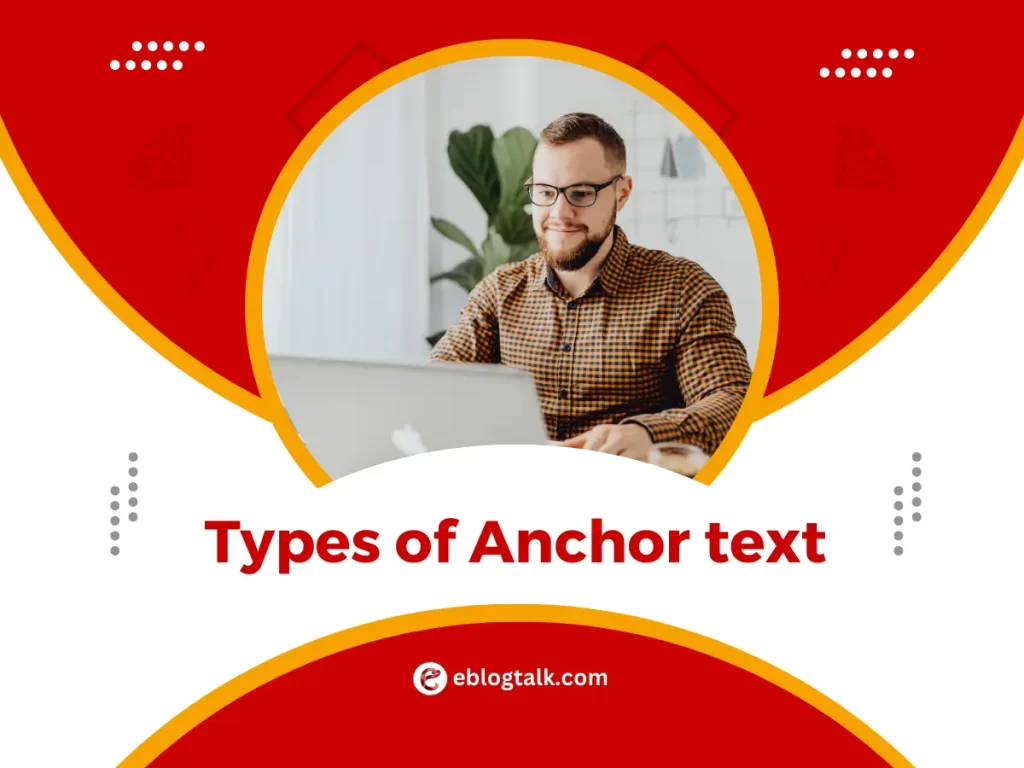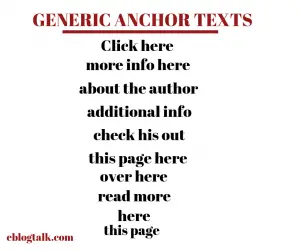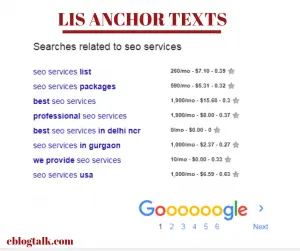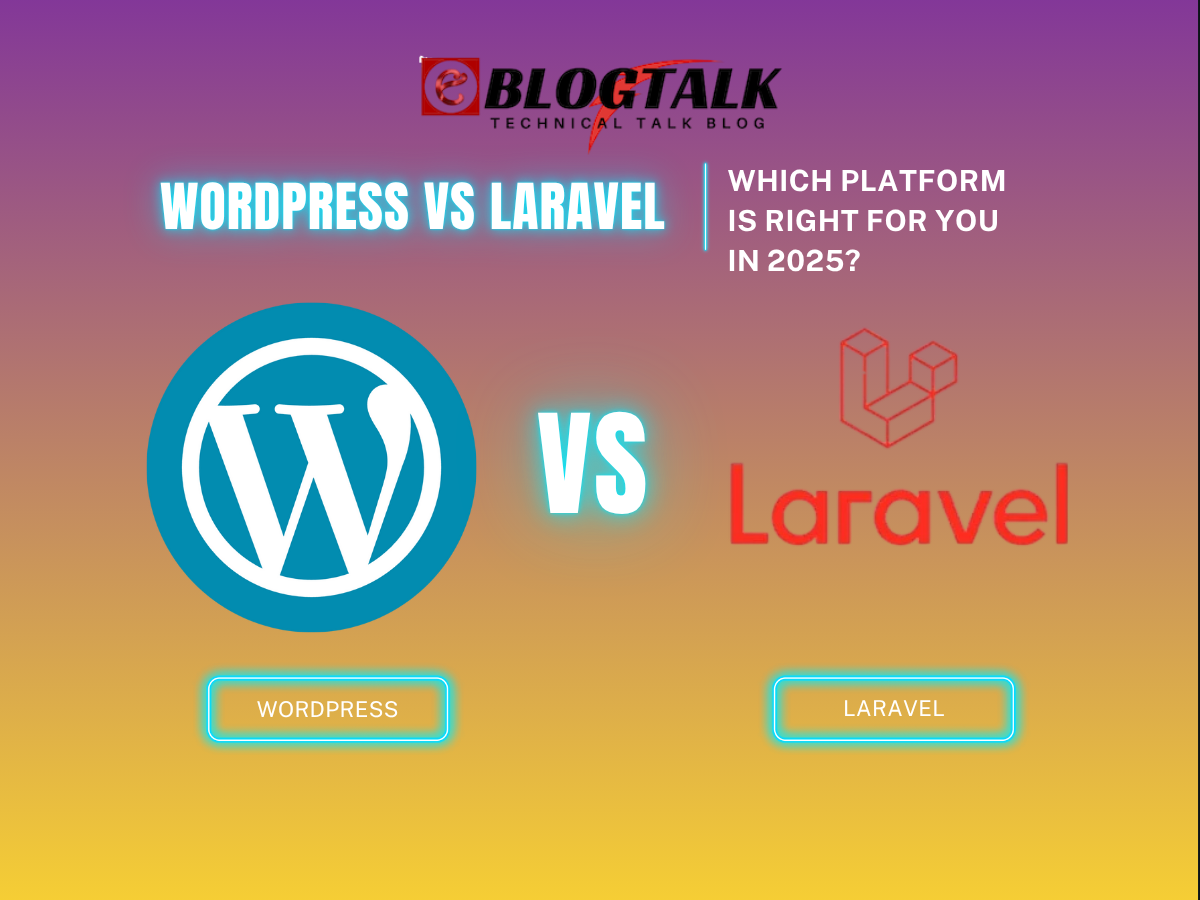Anchor text plays a key role in how users and search engines understand the context of a hyperlink. The clickable text in a hyperlink, usually underlined and with a different colour, can provide a hint to both people and bots on what page it links to. This is because the phrasing of this text can affect the health of your SEO, whether it be in the form of a simple phrase, of the words “click here”, or in the form of keyword-rich phrases.
Anchor text is a cue to search engines to determine the topic of the linked page. When applied with wisdom, it can be used to enhance rankings, context and even user trust. However, when used too much or in an abusive manner, it may result in fines or misconceptions about the users. This is why the knowledge of the types of anchor texts is important in any link-building or content strategy.
With that in mind, let’s now dive into the different types of anchor text. Explore their importance for SEO. So stick around!
- What is Anchor Text?
- 7 Main Types of Anchor Text
- Anchor Text and Its Importance in SEO
- Conclusion
- Types of Anchor Text And SEO FAQs
- What is Anchor Text in SEO?
- How do we create an Anchor Text?
- 8 Types of Anchor Text
- How do we optimize Anchor Text?
- Use a diverse type of Anchor Text wisely
- Importance of Anchor Text
What is Anchor Text?

Anchor text is the text that a user clicks on in a hyperlink, and it is visible to the web user. It is normally shown in blue and is underlined by default, but may be styled with CSS. Anchor text serves both the user and the search engine to know what sorts of content they are likely to find on the linked page.
For example, if you link to a blog post about digital marketing using the phrase “learn digital marketing strategies,” that phrase becomes the anchor text. Not only does this alert the users as to what the link is about, but it also allows search engines such as Google to know the topic and relevance of the destination page.
The words used in anchor text matter a lot in SEO. It is a ranking signal in search engines, which implies that an appropriate and well-positioned anchor text can enhance the presence of the linked page in search engines. Nonetheless, there is such a thing as over-optimisation, which is subject to penalties, such as keyword stuffing. This is why it is necessary to use anchor text in a natural way, contextually, and in a way that does not worsen the user experience.
7 Main Types of Anchor Text
Anchor text is the visible, clickable part of a hyperlink that lets readers navigate from one page to another. When you are linking to a blog post, a product page, or a resource, the anchor text words will create an expectation of what the user is going to see on the other side of that link.
Although it might not appear to be an important detail, there are a number of various types of anchor text, and each of them has its style and application.
Let’s take a look at the seven main types of anchor text, explained in a simple and easy-to-understand way, along with examples for each.
1. Exact Match Anchor Text
Exact match anchor text is one where the same phrase or subject of the page being linked to is employed. It does not leave the reader in any confusion; it simply tells the reader what the link is all about.
Example:
“Check out our guide on vegan protein powders.”
If this links to a page specifically titled “Vegan Protein Powders,” it’s an exact match.
This kind of anchor is applicable when you need to be direct and clear. It tells readers, “This link goes exactly where you think it does.”
2. Partial Match Anchor Text
Partial match anchor text contains a variation or some part of the keyword or topic as opposed to the whole exact phrase. It is more loose and natural to write.
Example:
“Looking for plant-based options for post-workout meals?”
In case it is associated with a page on vegan protein powders, it would be a partial match because it would not use the same words, but it would be related to the subject matter.
This is usually employed by writers to ensure that their language remains diverse yet still relevant to the associated content.
3. Branded Anchor Text
This is where the hyperlink text consists of the name of the brand or business. It is one of the simplest forms, and it is frequently applied when citing sources or official websites.
Example:
“We recommend checking out products from Decathlon.”
Here, “Decathlon” is the brand name and is used as the clickable link.
The destination can be easily recognised by the readers in the branded anchor text. It is particularly helpful in a review, a recommendation or a citation.
More Resources:
Successful Entrepreneurs in India 2025
Young Entrepreneurs in India
MBA Chai Wala Net Worth 2025
Vivek Bindra Net Worth 2025
Aman Gupta Net Worth 2025
Emiway Bantai’s Net Worth 2025
Archana Puran Singh Net Worth 2025
4. Generic Anchor Text

Generic anchor text is a text that contains a generic phrase that does not say a lot about the link, but prompts you to take action.
Examples:
“Click here to know more.”
“Learn more about this program.”
“Check this out for details.”
Although it maintains a casual and light flow, it is not very contextual. Readers may require somewhat more specificity to be clear on what they are clicking on, but it does well in brief writing or linking to known subject matter.
5. Naked URL Anchor Text
A naked URL is when the actual web address is used as the anchor text.
Example:
“You can view the full list at **https://www.travelguide.com**.”
It is mostly applied when citing, writing emails or technical reports. Although it indicates the precise destination, it is not a very reader-friendly one, in the middle of a paragraph. Nevertheless, it is not obsolete, least where transparency matters.
6. Image Anchor Text
There are times when the link is not verbal; it is a picture. In case of a clickable image, the background anchor text is the alt text of the image.
Example:
You add a picture of a chocolate cake and link it to a recipe page. If the image has alt text like “Chocolate Cake Recipe,” that’s the anchor text being used behind the scenes.
This particularly applies in recipe blogs, fashion or eCommerce sites where a picture is worth a thousand words.
7. LSI or Related Keyword Anchor Text

LSI is an acronym which is referred to as Latent Semantic Indexing, but do not be misled by the term. It simply implies using similar words or phrases, which have a similar meaning to your topic.
Example:
“Our team tested the best long-distance running gear available.”
When that phrase is a link to a running shoes page, then it is an LSI anchor, since it is related but not identical.
This kind makes your content more diverse and keeps the writing interesting while still maintaining contact with the main subject.
Other Resources:
AdSense Plugins for WordPress 2025
WordPress AntiSpam Plugins 2025
WordPress Form Builder Plugins 2025
Google Analytics Plugins For WordPress 2025
WordPress Advertising Management Plugins 2025
WordPress Cache Plugins to Improve Speed and Core Web Vitals 2025
WordPress Backup Plugins For Automated Backup 2025
Anchor Text and Its Importance in SEO
Anchor text plays a crucial role as far as search engine interpretation and ranking of web content is concerned. Whenever a web page links to another page with a specific anchor text, it tells the search engines about the subject and significance of the destination page. In the long run, this may affect the ranking of such a page in search results using related keywords.
As an example, when many websites connect to your page with the words, best budget smartphones Google starts relating your page to the phrase. However, it is not about the packing keywords, but, in the long-term perspective, natural, diverse and well-structured anchor text is what will help achieve success in SEO.
Why Anchor Text Matters for SEO?
- Improves relevance: Helps search engines understand what the linked page is about.
- Enhances keyword approach: Intelligent application of full or partial matches can improve the position of target words.
- Improves internal linking: Internal links are good when you use relevant anchors.
- Signals boost authority: Other websites linking to you using quality anchor text will pass more contextual value.
- Avoid penalties: Overusing exact match anchors, especially in backlinks, can lead to Google penalties. A balanced mix is essential.
Best Practices for Anchor Text in SEO
- Keep it relevant and descriptive
- Avoid overusing exact-match keywords
- Mix different types of anchor text (branded, partial, generic, etc.)
- Ensure the anchor text fits naturally within the sentence
- Don’t link too often in one piece of content—quality beats quantity
In short, anchor text is a minor feature that has a huge effect. Not only does it enhance user experience when utilised judiciously, but it also enhances the ranking of your site in the search engines.
Conclusion
Anchor text may seem like a small element in your content, but it holds significant power when it comes to SEO and user navigation. With the correct selection of the form of anchor text and its effective use, you can not only naturally lead the reader but also make the search engines realise the structure and relevance of your material.
A well-considered combination of exact match, branded, partial match, and other kinds allows implementing a user-friendly and balanced linking strategy. Both in the case of the internal linking and backlinks, the anchor text must be relevant, readable and contextual. Ultimately, it is not all about links but rather creating trust, clarity and an enhanced experience by both the user and the search engines.
FAQs About Types of Anchor Text And SEO 2025
1. What is anchor text in SEO?
Anchor text is the clickable text in a hyperlink that helps search engines and users understand what the linked page is about.
2. How many types of anchor text are there?
There are 7 main types of anchor text: exact match, partial match, branded, generic, naked URL, image-based, and LSI (related keywords).
3. Why is anchor text important for SEO?
Anchor text indicates the topicality of the content it links to, affects keyword ranking, and assists in the internal link structure and navigation.
4. Can using the wrong anchor text hurt SEO?
Yes, search engines may penalize the use of incorrectly used exact-match keywords, or irrelevant anchor text may confuse users.
5. Should I use exact match anchor text in backlinks?
Apply the exact match anchor text sparingly. A healthy and natural variety of anchor text types is superior to long-term SEO.
> My Response is on my own site
> Image Sharing Sites
> Profile Submission Sites
> Edu Sites for Backlinks
> Ping Submission Sites
> PDF Submission Sites
> Social Bookmarking Sites
More Resources:
> What is breadcrumb navigation for SEO?
> Mobile SEO Mistakes
> How do we improve page speed- The Complete Guide
> SEO Myths about website optimization






